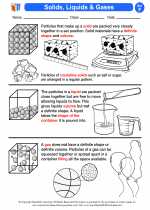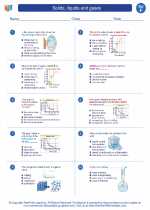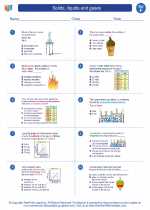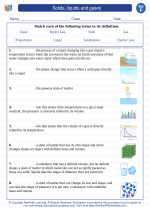Interference in Science
Interference in science refers to the interaction of two or more waves that results in a new wave pattern. When waves meet, they can overlap and combine in various ways, leading to a range of interesting phenomena.
Types of Interference
There are two main types of interference: constructive interference and destructive interference.
- Constructive Interference: Occurs when two waves meet and their amplitudes add together. This results in a new wave with a greater amplitude.
- Destructive Interference: Occurs when two waves meet and their amplitudes subtract from each other. This results in a new wave with a smaller or zero amplitude.
Applications of Interference
Interference plays a crucial role in various scientific fields and everyday phenomena, including:
- Optics: Interference of light waves is used in devices such as interferometers to make precise measurements.
- Acoustics: Interference of sound waves can lead to the phenomenon of beats, which is used in tuning musical instruments.
- Radio communication: Interference of radio waves can affect the quality of wireless communication.
Study Guide: Interference
Key Concepts to Understand:
- The definition of interference and how it relates to the interaction of waves.
- The difference between constructive and destructive interference and how they affect wave amplitudes.
- Real-world applications of interference in various scientific fields.
Practice Questions:
- What is interference in the context of waves?
- Explain the difference between constructive and destructive interference.
- How is interference used in the field of optics?
Hands-On Activities:
1. Conduct an experiment to demonstrate constructive and destructive interference using water waves in a ripple tank.
2. Build a simple interferometer using everyday materials to observe interference patterns of light waves.
.◂Science Worksheets and Study Guides Sixth Grade. Solids, liquids and gases
Study Guide Solids, liquids and gases
Solids, liquids and gases  Activity Lesson
Activity Lesson Solids, Liquids & Gases
Solids, Liquids & Gases  Worksheet/Answer key
Worksheet/Answer key Solids, liquids and gases
Solids, liquids and gases  Worksheet/Answer key
Worksheet/Answer key Solids, liquids and gases
Solids, liquids and gases  Worksheet/Answer key
Worksheet/Answer key Solids, liquids and gases
Solids, liquids and gases  Vocabulary/Answer key
Vocabulary/Answer key Solids, liquids and gases
Solids, liquids and gases  Vocabulary/Answer key
Vocabulary/Answer key Solids, liquids and gases
Solids, liquids and gases 

 Activity Lesson
Activity Lesson
 Worksheet/Answer key
Worksheet/Answer key
 Worksheet/Answer key
Worksheet/Answer key
 Worksheet/Answer key
Worksheet/Answer key
 Vocabulary/Answer key
Vocabulary/Answer key
 Vocabulary/Answer key
Vocabulary/Answer key

The resources above cover the following skills:
PHYSICAL SCIENCE
Energy
Students who demonstrate understanding can:
Plan an investigation to determine the relationships among the energy transferred, the type of matter, the mass, and the change in the average kinetic energy of the particles as measured by the temperature of the sample.